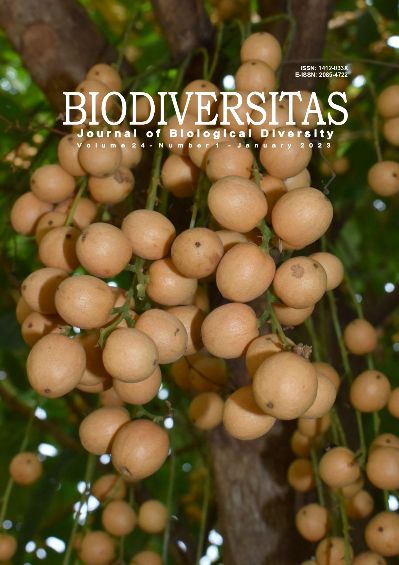Lexicon of medicinal plants in traditional medicine in the Dayak Tamambaloh Tribe (West Kalimantan, Indonesia): An ethnolinguistic approach
##plugins.themes.bootstrap3.article.main##
Abstract
Abstract. Susanti Y, Supiandi MI, Julung H, Zubaidah S, Mahanal S. 2023. Lexicon of medicinal plants in traditional medicine in the Dayak Tamambaloh Tribe (West Kalimantan, Indonesia): An ethnolinguistic approach. Biodiversitas 24: 391-398. The Dayak Tamambaloh community in Temau Village, Embaloh Hulu Subdistrict, Kapuas Hulu District, West Kalimantan Province, Indonesia, still maintains local wisdom in utilizing plants as basic ingredients for traditional medicine. In the process of traditional medicine, the Tamambaloh Dayak people use the local lexicon. However, local knowledge related to traditional medicine in the Tamambaloh Dayak tribe is only conveyed orally from generation to generation and does not have written scientific documentation. This study aimed to record local traditional medicinal plants, lexicon, phonetics and the function of medicinal plants used by the Dayak Tamambaloh community. This study used the descriptive qualitative method. Research data were obtained through in-depth interviews and documentation. Informants in this study were traditional leaders, village midwives, shamans, and people who often use medicinal plants. Analysis of research data was to describe the spoken language of the medicinal plant lexicon into written language using elan, classifying, describing, analyzing, and interpreting the results of research on the lexicon and the function of medicinal plants in traditional medicine in the Dayak Tamambaloh community. The results obtained 33 medicinal plant lexicons, 33 medicinal plant functions, and 25 medicinal plant species in 24 families. The most widely used families were Arecaceae (2 species), Asteraceae (2 species), Blechnaceae (2 species), Bombacaceae (2 species), Liliaceae (2 species), Myrtaceae (2 species), Piperaceae (2 species), Rubiaceae (2 species), and Solanaceae (2 species). The results of this study become the basis for preserving traditional medicine in remote tribes that still maintain local wisdom.

